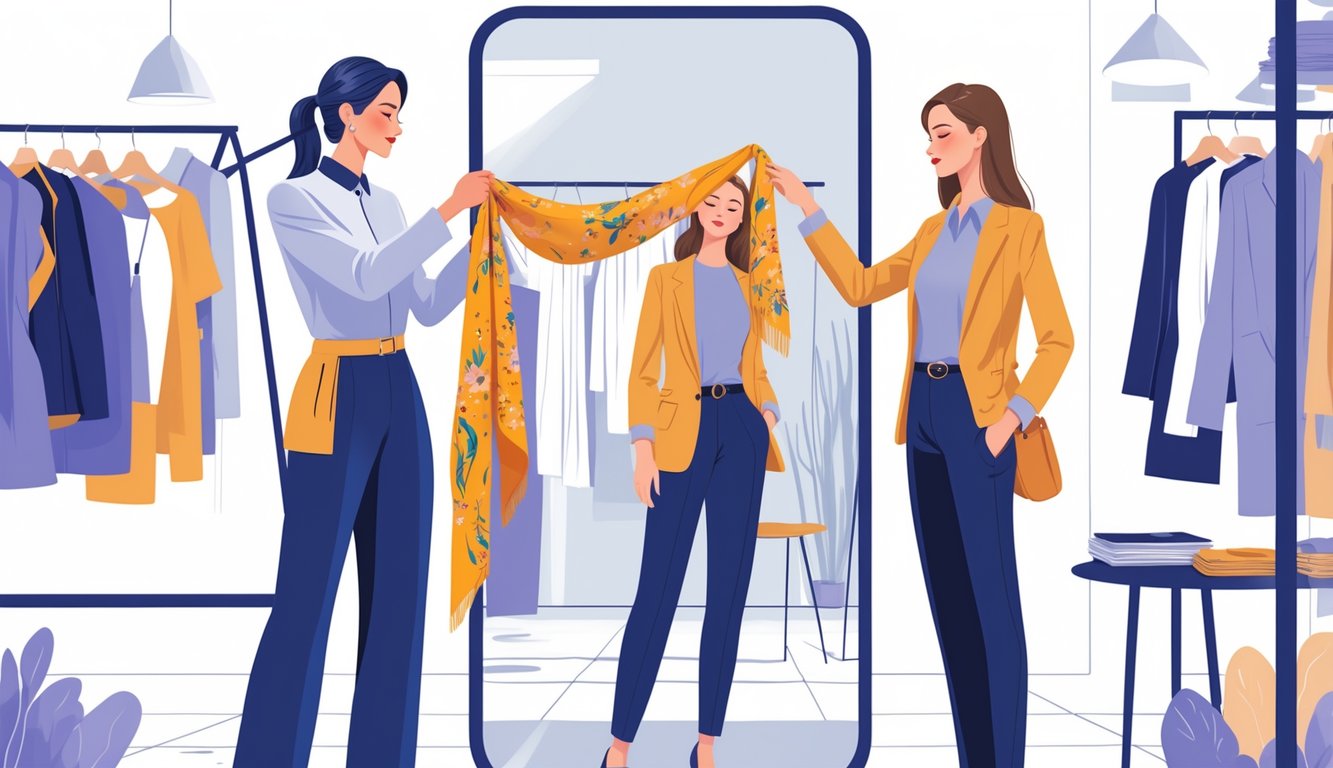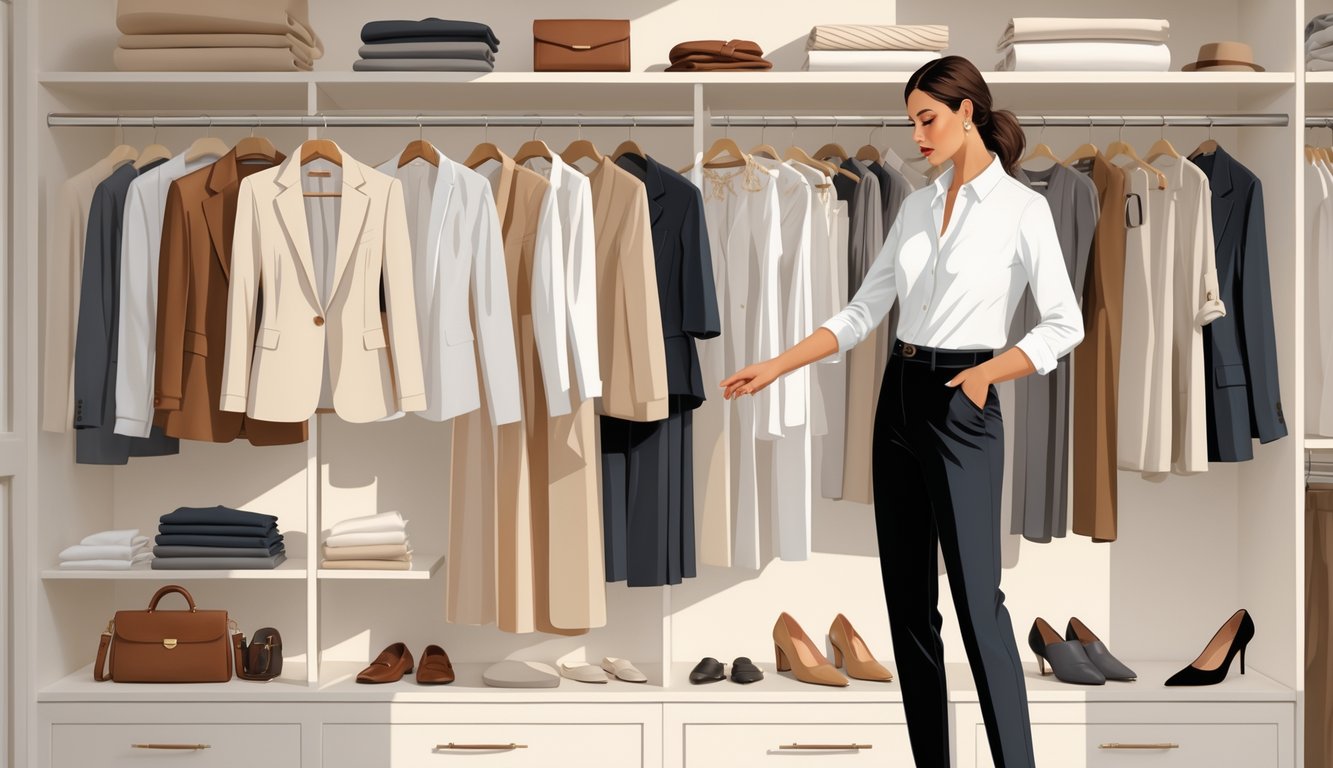
Capsule Wardrobe Foundations

Let’s be real: white T-shirts never last, and nobody warns you how much math is involved in making a capsule wardrobe work. It’s not just “own less,” it’s “own less and somehow always have something to wear.” Neutrals, classics, and a suspicious number of “casual” pieces. Most lists skip the mental gymnastics.
How to Build Your Capsule Wardrobe
There’s this “20 to 30 core pieces” rule that stylists love, but honestly, everyone cheats. One stylist told me she does 70 outfits from 26 things, but she skips counting tank tops, so what’s the point? I get it, though—too many options and I just panic-buy more jeans.
Best method I’ve found: dump everything on the bed, keep what I wear every two weeks, and force what’s left into “actually useful” categories. Like, the sneaker that passes for a work shoe (classic white, always). Even Glamour editors are obsessed. If your capsule fits in two suitcases, you’re overthinking it. Stylists keep saying, “Pick shapes you’d wear even if nobody cared.” Ignore the capsule police.
I tried spreadsheets. Didn’t work—seasons change, my brain melts. If you need a shortcut, just do ten minutes per category: bottoms, tops, layers, shoes. If you’re stuck, toss it or text your stylish friend for backup. If your capsule makes you feel like you’re prepping for a zombie apocalypse, you’ve gone too far.
Choosing Neutral Colors
Beige, gray, navy—sounds boring, but seriously, when’s the last time you saw someone in orange pants looking chic? The real trick (straight from Parisian stylists and Instagram micro-celebs): cool vs. warm tones don’t matter unless you’re a catalog model. Mix off-whites with black? Nobody cares, except maybe Instagram trolls.
Neutrals really do make outfits easier, but I only trust colors that hide coffee spills. One stylist said, “Pick three neutrals you don’t hate, then one wild card.” Like, a red sweater so you don’t look like a hotel employee.
Traveling with just sand, olive, and black? Weirdly easy. My outfits looked planned even when they weren’t. Who What Wear editors swear by neutrals for “confidence and authenticity,” but I’ve never heard anyone say, “Wearing camel changed my life.” Maybe one day.
Mixing Casual Pieces with Staples
Alright, here’s my confession: I wear sweatshirts with tailored trousers and, shockingly, nobody’s thrown me out of a restaurant yet. I’ll toss a distressed tee under a blazer just to see if anyone notices (spoiler: they don’t, or they pretend not to). People act like “contrast” is some secret code, but honestly, even Anna Wintour’s in sneakers now. Or maybe that was just a rumor. Who even checks these things?
If my outfit feels like I just rolled out of bed, I’ll add dark jeans or loafers and suddenly strangers can’t decide if I’m lazy or a genius. That’s the line I walk—sometimes on purpose, sometimes because I can’t find my other shoe.
I can’t stand those “transitional wardrobe” lists. Why does anyone need both jeans and tailored pants? Who’s got that kind of closet space? My so-called formula: 60% boring, reliable stuff (white shirts, jackets with structure, jeans that don’t look like they’ve been attacked by sandpaper), 40% stuff that feels like pajamas but I swear is clean. Capsule wardrobe people (like at My Chic Obsession) admit they cheat with “casual” pieces all the time—me, I’ll layer a soft crewneck and pretend it’s intentional.
Funniest part? Every time I force myself into “smart” shoes just for a Zoom call, I remember my best outfits are usually accidents. Rules are fake. Just don’t wear gym shorts with a blazer unless you want to become a meme.
The Role of High-Quality Fabrics and Tailoring
Look, I don’t get why people ignore fabric. Wear cheap polyester and wonder why you’re sweaty and sad by lunch. Quality material—wool, cotton, linen—actually makes you look good and not like you lost a wrestling match with a dryer. Tailors are magicians, but not the rabbit-out-of-hat kind; they just see stuff you missed, and suddenly your friends think you got a promotion or started intermittent fasting.
Opting for Natural Fibers
Here’s what drives me nuts: people see “wool” or “cashmere” and still buy polyester because it’s $20 less, then complain when their blazer looks like a deflated balloon after a month. I read this breakdown (can’t remember where, maybe Reddit?) comparing thread count and density—real wool, linen, silk, all that, lasts way longer and doesn’t stick to your skin. I left a cotton shirt in a pile for a week, barely wrinkled. My “performance” blend? Dead after three washes. Stylists always say the difference is obvious after a dozen wears, not just the first. Octavia—runs a bespoke shop, total legend—swears natural fibers breathe better. Sounds like marketing, but it’s true: less stink, less itch, less static. Sure, the price hurts, but you end up buying less junk, so maybe it evens out? If you want your stuff to last, don’t buy whatever’s cheapest and then whine when it pills. There’s a whole thing about that at Michael Tailors.



